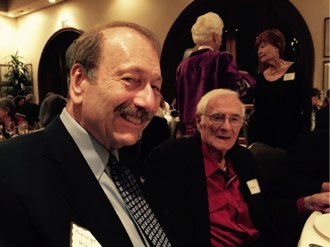Turning 95 in style

Ninety-five guests attend the party in Santa Barbara, including four generations of Sinshimer family members, many friends, colleagues, and former students. I was a relatively junior faculty member during Bob's tenure as chancellor, but he brought transformational leadership to the campus at a key turning point. I spoke of his success solidifying our standing with the Office of the President during a tense moment when budget cuts were prompting public discussion about the possible closure of a campus. Bob also oversaw growth in academic programs, the doubling of graduate enrollment from 350 to 700 students, and the expansion of areas that would become defining parts of our research identity, including linguistics, high-energy physics, seismology, agroecology, and applied economics. There's no honoring Bob's years as chancellor without also celebrating his wife Karen, who brought tremendous warmth and grace to the position.
Of course, one of the most enduring impacts Bob had on the campus wasn't even intentional: It was Bob who made the audacious suggestion in 1985 during an international scientific conference hosted by UCSC to sequence the entire human genome. No one could have anticipated the critical role Santa Cruz would play in that challenge, or the excellence that followed our triumphant success. Professor Emeritus Harry Noller of biology described Bob's vision and what it has meant to the campus.
Other guests included Art Graham, Bob's college roommate at MIT and a good friend to UCSC; Reg Kelly, a former student at CalTech; and Julie Dryden-Brown, Bob's former administrative assistant at UCSC, and Julie's husband George Brown.
There was a lot of love in the room, and I felt honored to be part of the celebration.
Comments or questions? Write to chancellor@ucsc.edu and put "Sinsheimer" in the subject line.
